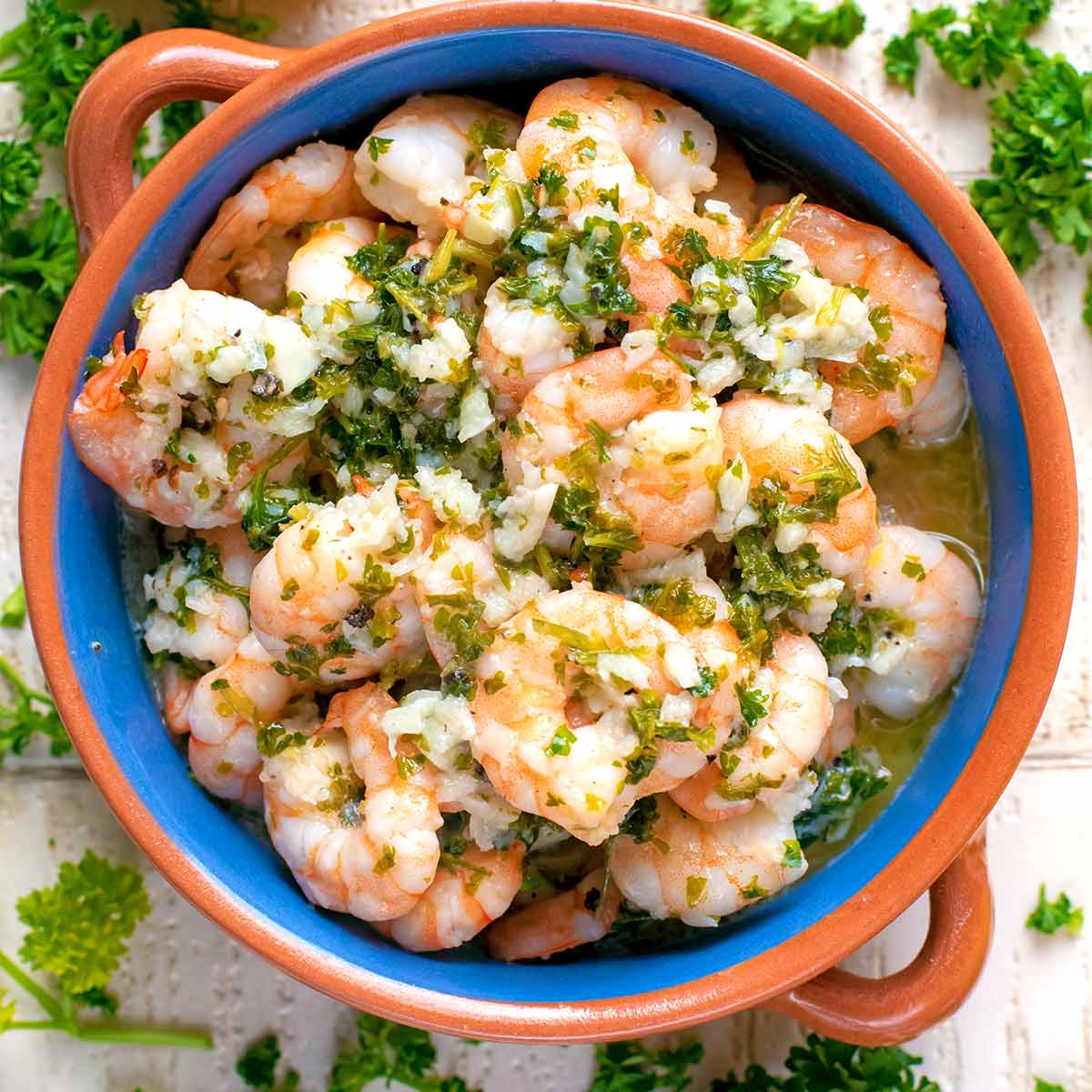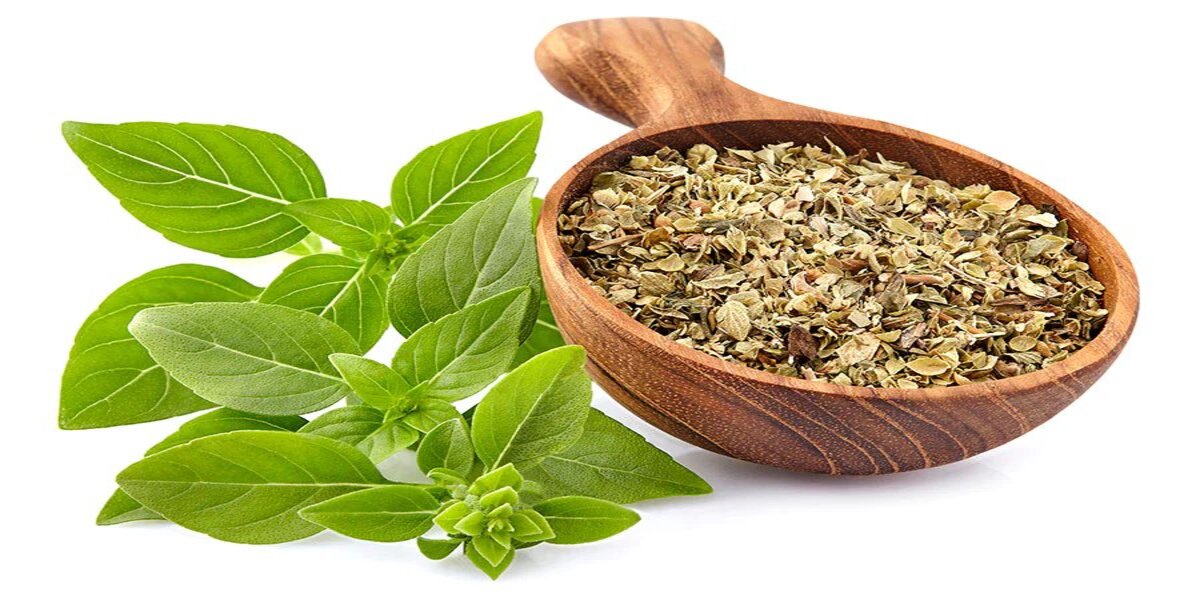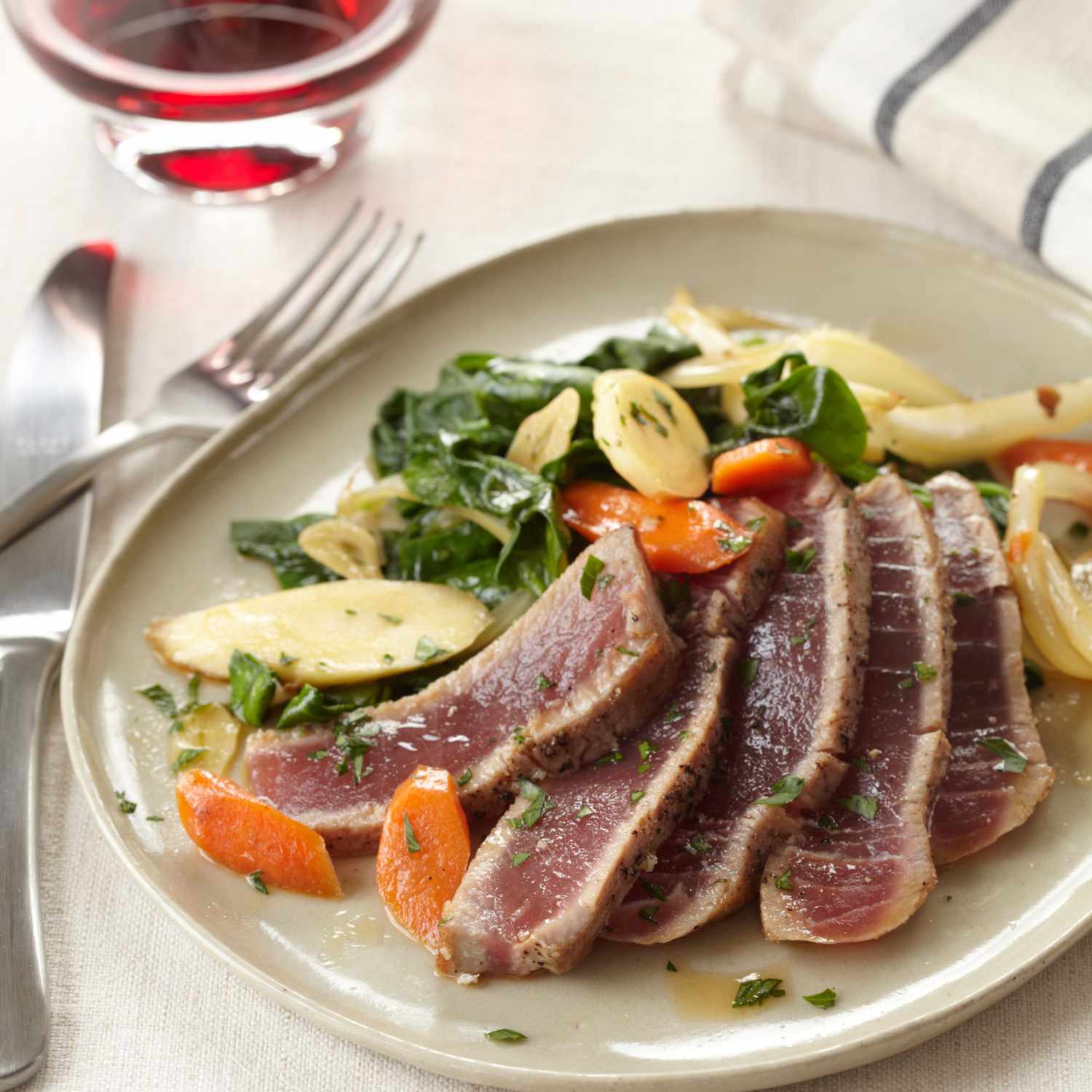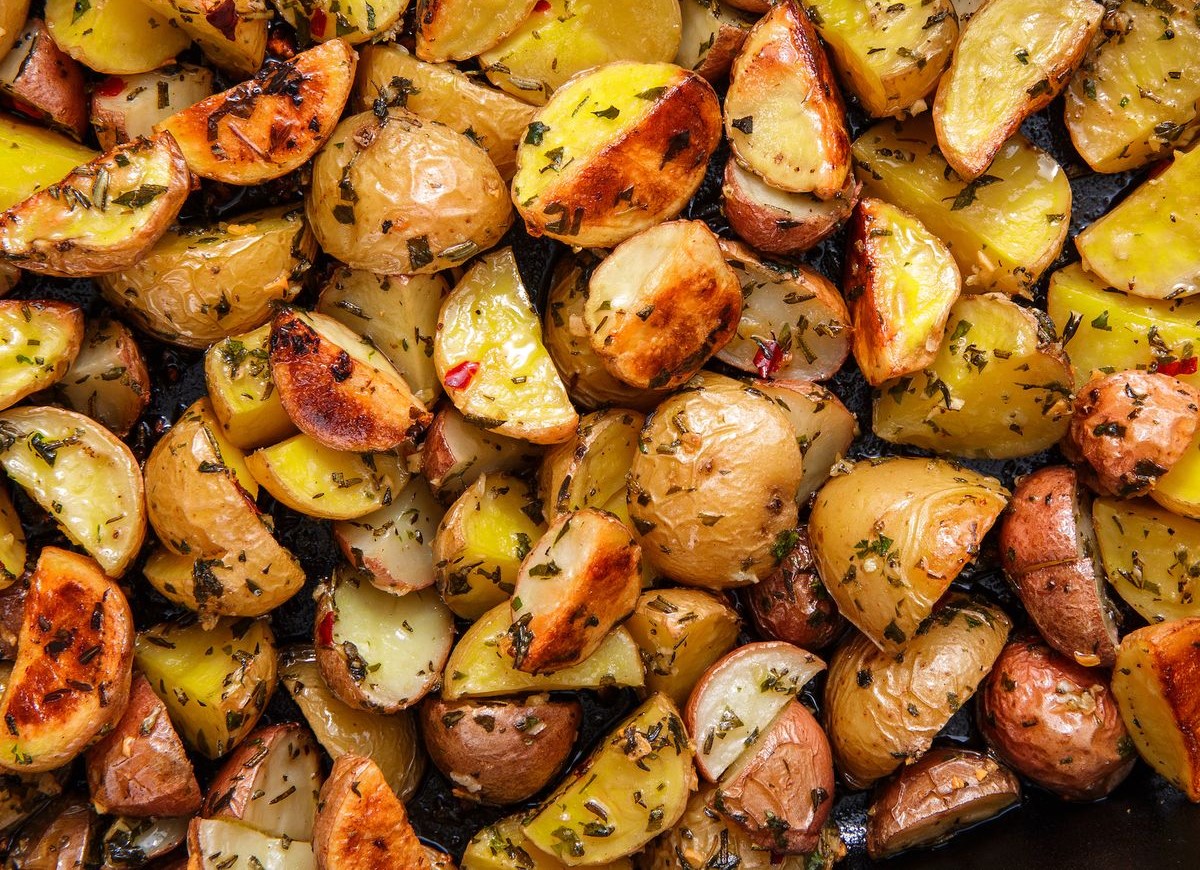Home>Gardening News and Trends>Gardening Trends>What Herbs Go Well With Beef
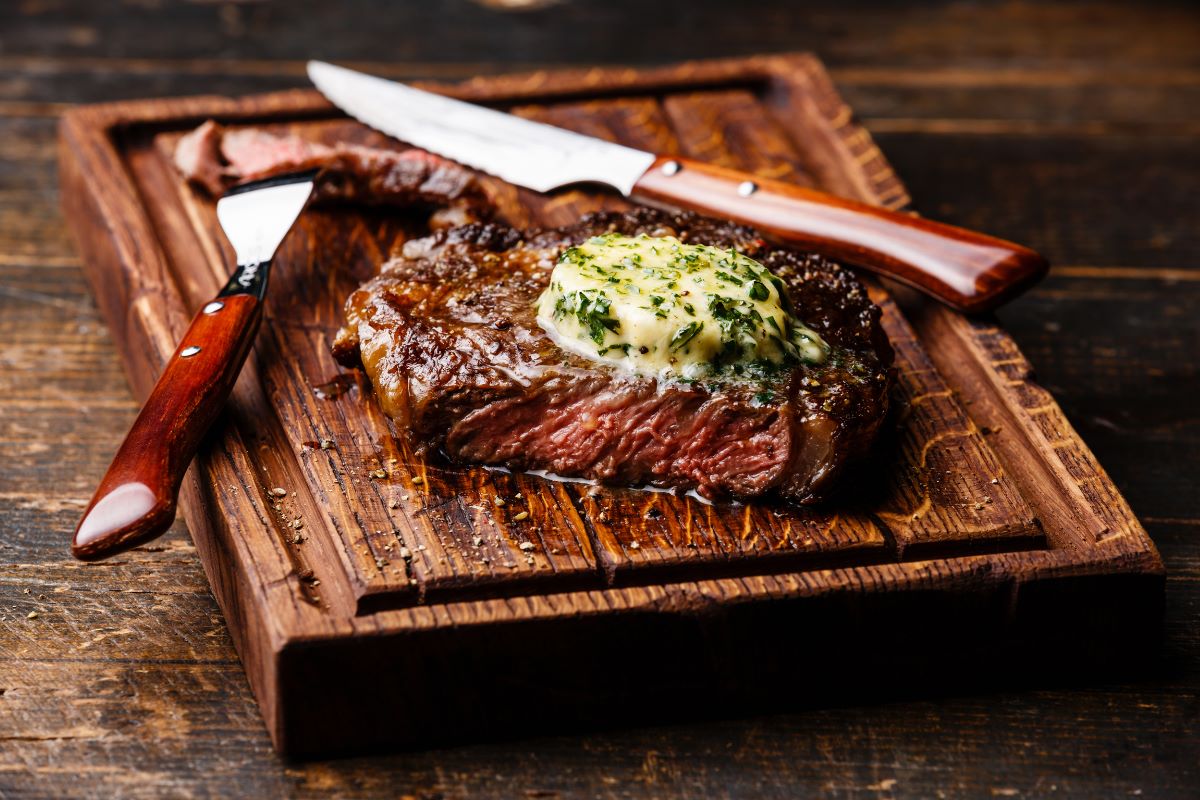

Gardening Trends
What Herbs Go Well With Beef
Published: September 30, 2023
Discover the latest gardening trends and find out which herbs pair perfectly with beef dishes. Elevate your culinary creations with these winning flavor combinations.
(Many of the links in this article redirect to a specific reviewed product. Your purchase of these products through affiliate links helps to generate commission for Chicagolandgardening.com, at no extra cost. Learn more)
Table of Contents
Introduction
Welcome to the world of gastronomy, where the combination of herbs and beef creates mouthwatering culinary magic. Whether you’re a seasoned chef or a home cook looking to elevate your dishes, knowing which herbs go well with beef can truly enhance the flavor profile of your creations. Incorporating the right herbs adds depth, aroma, and a touch of freshness that perfectly complements the rich and savory nature of beef.
When it comes to selecting the perfect herbs to pair with beef, there is a wide variety to choose from. Each herb brings its unique flavor profile and aromatic qualities to the table, allowing for endless culinary possibilities. From the earthiness of rosemary to the peppery notes of thyme, these herbs can take your beef dishes to the next level.
In this article, we will explore some of the most popular herbs that complement beef in remarkable ways. Whether you’re preparing a succulent steak, a hearty stew, or a delicious roast, these herbs will add a burst of flavor to your dishes and impress your family and guests.
Rosemary
Rosemary is a woody and fragrant herb that pairs exceptionally well with beef. Its distinct pine-like aroma adds a delightful earthiness to dishes, enhancing the flavor of beef in a remarkable way. The robust flavor of rosemary can stand up to the richness of beef, making it an ideal herb for grilling, roasting, or braising.
When using rosemary, it is recommended to use fresh sprigs or dried rosemary leaves. For grilled steaks, simply rub the meat with a mixture of olive oil, chopped rosemary, salt, and pepper before cooking. The heat intensifies the aroma of the herb, creating a tantalizing scent that will make your taste buds dance with delight.
If you’re preparing a roast, you can incorporate rosemary by creating small incisions in the meat and inserting whole rosemary sprigs. As the meat cooks, the rosemary infuses its flavors, resulting in a succulent and aromatic dish.
Not only does rosemary add flavor to beef, but it also offers numerous health benefits. It is rich in antioxidants and has anti-inflammatory properties, making it a great addition to a balanced diet.
So, the next time you’re cooking beef, don’t forget to make rosemary your ally. Its aromatic essence and robust flavor will take your dishes to new heights, leaving your guests craving for more.
Thyme
Thyme is a versatile herb that beautifully complements the flavor of beef. With its earthy and slightly minty undertones, thyme adds depth and richness to various beef dishes. Whether you’re preparing a tender steak or a hearty beef stew, thyme is a go-to herb that will enhance the overall taste profile.
When cooking with thyme, it’s best to use fresh sprigs or dried thyme leaves. The herb pairs exceptionally well with slow-cooked beef dishes like stews and braises. The long cooking process allows the flavors of thyme to infuse into the meat, resulting in a savory and aromatic delight.
If you’re grilling or pan-searing a steak, you can incorporate thyme by creating a simple thyme butter. Melt butter and add chopped thyme leaves, then brush the mixture onto the steak while it cooks. This imparts a subtle herbal essence to the meat, enhancing the overall flavor profile.
Thyme also pairs wonderfully with other herbs like rosemary and garlic, creating a flavor combination that elevates beef dishes to new heights. Whether it’s a herb-roasted beef tenderloin or a grilled beef kebab, the addition of thyme adds a burst of freshness that perfectly complements the richness of the meat.
In addition to its flavor-enhancing properties, thyme also offers health benefits. It is packed with vitamins, minerals, and antioxidants, making it a nutritious addition to your meals. Thyme is also believed to have antimicrobial and anti-inflammatory properties that support overall well-being.
So, grab some fresh thyme and let its aromatic essence elevate your beef dishes to new levels of deliciousness. Whether you’re a herb enthusiast or a novice cook, thyme is sure to impress with its versatility and delightful flavor.
Sage
Sage is a herb that brings a unique and robust flavor to beef dishes. With its slightly peppery and earthy taste, sage adds a distinct character to various beef recipes. Whether you’re cooking a juicy steak, a savory roast, or a comforting meatloaf, incorporating sage can take your beef dishes to a whole new level.
When using sage, it is best to opt for fresh leaves as they offer a stronger flavor. You can finely chop the sage leaves and mix them into your ground beef mixture for a flavorful meatloaf or burger patty. The sage complements the meaty flavors and adds a subtle aromatic touch to each bite.
If you’re roasting a beef tenderloin or a prime rib, you can incorporate sage by creating a sage rub. Combine chopped sage leaves with garlic, salt, pepper, and olive oil, then rub the mixture all over the meat before roasting. This allows the flavors of sage to infuse into the meat, resulting in a succulent and fragrant roast.
Sage also pairs well with hearty and rich beef stews. Adding a few whole sage leaves to the simmering pot adds a subtle herbaceous flavor to the dish. The aromatic notes of sage beautifully complement the slow-cooked beef and other ingredients in the stew.
Aside from its culinary merits, sage is also known for its potential health benefits. It is believed to have antioxidant and anti-inflammatory properties, making it a welcome addition to a balanced diet.
Incorporating sage into your beef dishes not only adds layers of flavor but also provides a touch of elegance and sophistication. So, the next time you’re cooking beef, don’t forget to let sage work its magic and create a memorable dining experience.
Garlic
Garlic is a staple in many cuisines around the world, and it pairs exceptionally well with beef. Known for its pungent and aromatic flavor, garlic adds depth and intensity to beef dishes, enhancing their overall taste profile.
There are several ways to incorporate garlic into your beef recipes. One popular method is to create a garlic paste by finely mincing garlic cloves and combining them with salt to create a paste. Rub this mixture onto the beef before cooking, allowing the flavors to permeate the meat. This technique works well for grilled steaks, roasts, or even stir-fried beef dishes.
Another way to infuse garlic flavor into your beef dishes is by using roasted garlic. Roasting garlic cloves in the oven brings out their natural sweetness and mellows out their sharpness. You can then mash the roasted garlic and mix it into sauces or marinades for your beef, adding a subtle and nutty garlic flavor.
If you’re making a beef stew or a braise, adding whole cloves of garlic to the pot can infuse the dish with a rich and savory taste. As the beef cooks, the garlic cloves become soft and tender, adding bursts of flavor to each bite.
Garlic not only adds incredible flavor to beef but also boasts numerous health benefits. It is known for its immune-boosting properties and potential cardiovascular benefits. Incorporating garlic into your dishes not only enhances their taste but also contributes to your overall well-being.
So, whether you’re grilling a steak, roasting a prime rib, or preparing a comforting beef stew, don’t forget to reach for the garlic. Its distinct flavor will elevate your beef dishes and leave you savoring every delicious bite.
Oregano
Oregano is a versatile herb that adds a delightful Mediterranean touch to beef dishes. With its robust and slightly bitter flavor, oregano pairs exceptionally well with various cuts of beef. Its aromatic and earthy notes create a harmonious balance of flavors, enhancing the overall taste profile.
Oregano can be used in both fresh and dried forms, depending on your preference and availability. For grilling or pan-searing beef, you can sprinkle dried oregano over the meat along with salt, pepper, and other seasonings. This imparts a savory and herbaceous essence to the beef.
If you’re making a beef marinade or sauce, incorporating fresh oregano leaves can elevate the flavors to new heights. Chop up the fresh oregano leaves and mix them into your marinade or sauce, allowing the herbaceous flavors to meld with the beef. This technique works particularly well for dishes like Greek souvlaki or Mediterranean-inspired beef kebabs.
Oregano is also a fantastic addition to beef stews and braises. Adding a sprinkle of dried oregano or a handful of fresh oregano leaves to the pot infuses the dish with a complex and aromatic flavor. The herb pairs exceptionally well with tomatoes, garlic, and onions, creating a rich and comforting dish that will warm you from the inside out.
Aside from its culinary merits, oregano also offers potential health benefits. It is believed to have antioxidant and antimicrobial properties, making it a valuable addition to a nutritious diet.
So, the next time you’re cooking beef, don’t forget to include oregano in your culinary repertoire. Its bold and herbaceous flavor will transport your taste buds to the sun-soaked Mediterranean, adding a touch of Mediterranean magic to your beef dishes.
Parsley
Parsley is a vibrant and versatile herb that adds freshness and brightness to beef dishes. Known for its mild and slightly peppery flavor, parsley is an excellent herb to pair with beef, as it enhances the overall taste and adds a beautiful pop of green to your plate.
There are two main types of parsley – curly parsley and Italian flat-leaf parsley. While both can be used, many chefs prefer the flat-leaf variety for its more pronounced flavor. Parsley can be used both as a garnish and as an ingredient to add depth and complexity to beef recipes.
When using parsley in beef dishes, it is best to use fresh leaves. You can add chopped parsley to marinades for grilled beef, creating a refreshing and aromatic base for the flavors to develop. It also works well in meatballs or meatloaf, where the parsley adds a burst of freshness.
Parsley is a fantastic addition to beef sauces or compound butters. Incorporating finely chopped parsley leaves into a pan sauce or mixing it with softened butter and other herbs creates a flavorful accompaniment to steaks, roasts, or grilled meats.
In addition to its flavor-enhancing properties, parsley is also a nutritional powerhouse. It is rich in vitamins A, C, and K, as well as antioxidants. Incorporating parsley into your meals not only adds flavor but also contributes to a healthy and balanced diet.
So, whether you’re grilling a steak, making a hearty beef stew, or preparing a roast, don’t forget to garnish your dishes with a sprinkle of fresh parsley. Its vibrant flavor and beautiful green color will elevate your beef dishes to new heights of freshness and visual appeal.
Marjoram
Marjoram is a fragrant herb that adds a subtle yet distinctive flavor to beef dishes. It belongs to the same family as oregano but has a milder and sweeter taste. With its delicate and floral notes, marjoram beautifully complements the richness of beef, enhancing its natural flavors.
Marjoram can be used in both fresh and dried forms, depending on your preference and availability. It pairs particularly well with grilled or roasted beef dishes. You can create a marinade or rub by combining marjoram leaves with olive oil, garlic, salt, and pepper. Coat your beef in this herb-infused mixture before grilling or roasting to add a gentle and aromatic touch.
If you’re making a beef stew or a slow-cooked dish, adding dried marjoram to the pot can infuse the entire dish with its subtle flavor. The herb works in harmony with other ingredients, creating a well-rounded and satisfying flavor profile. Marjoram can also be added to soups, sauces, and marinades to enhance the overall taste.
Marjoram not only enhances the flavor of beef but also offers potential health benefits. It contains antioxidants and may have antibacterial properties, making it a welcome addition to your culinary creations.
So, the next time you’re looking to add a touch of gentle and aromatic flavor to your beef dishes, reach for marjoram. Its subtle yet distinctive taste will elevate your beef recipes and bring a delightful complexity to your culinary creations.
Bay Leaves
Bay leaves are a classic herb that imparts a unique and aromatic flavor to beef dishes. These leaves come from the bay laurel tree and are known for their subtle and slightly floral taste. While bay leaves are not typically consumed on their own, they add a wonderful depth of flavor when used in cooking.
Bay leaves are often used in long-simmered beef dishes like stews, soups, and braises. The leaves are added to the pot during the cooking process, releasing their fragrance and flavor into the dish. Bay leaves have a slightly bitter taste that beautifully complements the richness of beef, enhancing its savory notes.
When cooking with bay leaves, it’s important to note that they are not meant to be eaten. They should be removed from the dish before serving, as they can be tough and have a slightly sharp edge. However, they infuse the dish with their subtle aroma, adding a delightful complexity to the overall taste.
Bay leaves are also commonly used in marinades for beef. Infusing the marinade with bay leaves adds an extra layer of flavor to the meat, resulting in a more nuanced and aromatic dish. You can incorporate bay leaves into your marinade by crushing the leaves or simply placing whole leaves in the mixture.
In addition to their flavor-enhancing properties, bay leaves have been associated with potential health benefits. They are believed to have antimicrobial properties and may aid in digestion. However, it’s important to note that bay leaves should be used in moderation, as excessive consumption may have adverse effects.
So, if you’re looking to add a subtle and aromatic flavor to your beef dishes, reach for bay leaves. Their unique taste and fragrance will elevate your recipes, infusing them with a hint of sophistication and depth.
Chili Peppers
Chili peppers are a fiery and bold addition to beef dishes, bringing heat and a distinctive flavor that can take your taste buds on a thrilling adventure. With a wide variety to choose from, including jalapenos, serranos, habaneros, and more, chili peppers add a spicy kick that can elevate the flavor profile of beef in exciting ways.
When using chili peppers in beef recipes, it’s important to consider both the desired level of heat and the overall flavor profile. Different types of chili peppers vary in heat intensity, so it’s recommended to use them sparingly and adjust according to personal preference.
For those who enjoy milder heat, jalapenos or poblano peppers can be used to add a subtle kick to beef dishes. These peppers can be diced and sautéed with onions and garlic as a base for chili, or added raw to salads or salsas for a burst of flavor.
If you’re looking to turn up the heat, serrano or habanero peppers can provide a fiery punch to your beef recipes. These peppers are well-suited for spicy beef stir-fries, hot sauces, or even incorporating into marinades for grilled meats. It’s important to handle these peppers with care and use gloves when cutting and handling them, as their spiciness can linger on the skin.
Chili peppers can also be dried, ground, or used in powdered form, such as cayenne pepper or chili powder. These forms are commonly used to season ground beef for dishes like tacos, chili con carne, or spicy meat sauces.
Aside from their heat, chili peppers also bring a unique and complex flavor to beef dishes. They can have earthy, fruity, or smoky undertones depending on the variety. Their flavor pairs exceptionally well with beef, as the spiciness complements the richness of the meat and creates a harmonious balance.
When incorporating chili peppers into your beef dishes, it’s always best to start with a small amount and taste as you go. This allows you to adjust the level of heat and ensure it’s to your liking.
So, whether you’re a fan of mild heat or crave fiery flavors, don’t be afraid to experiment with chili peppers in your beef dishes. They can add a thrilling touch that will delight spicy food lovers and take your culinary creations to a whole new level.
Conclusion
Exploring the world of herbs and their compatibility with beef opens up a world of culinary possibilities. Each herb brings its unique flavor profile, aroma, and health benefits to beef dishes, enhancing their taste and elevating them to new heights of deliciousness.
From the earthy and robust flavors of rosemary and thyme to the subtle and aromatic notes of sage and marjoram, these herbs beautifully complement the richness of beef, creating a harmonious balance of flavors.
Garlic adds depth and intensity, while oregano provides a touch of Mediterranean magic. Parsley adds freshness, while bay leaves infuse dishes with fragrance. And for those that like some heat, chili peppers bring fiery excitement to beef recipes.
When incorporating these herbs into your beef dishes, it’s important to consider their optimal usage. Whether it’s grilling, roasting, stewing, or marinating, each herb lends itself to different cooking techniques and can be used to enhance specific cuts of beef.
Furthermore, beyond their culinary merits, many of these herbs offer potential health benefits. They are rich in antioxidants, vitamins, and minerals, and some even have anti-inflammatory or immune-boosting properties, making them valuable additions to a well-rounded diet.
So, the next time you’re planning a beef dish, don’t hesitate to experiment with these herbs. Personalize your culinary creations and discover the magic that happens when you combine herbs and beef. Whether you’re a seasoned chef or an adventurous home cook, the use of these herbs will enhance the flavor of your beef dishes and leave a lasting impression on your taste buds.
Embrace the world of herbs and their affinity with beef, and let your culinary journey unfold with every savory and aromatic bite.





